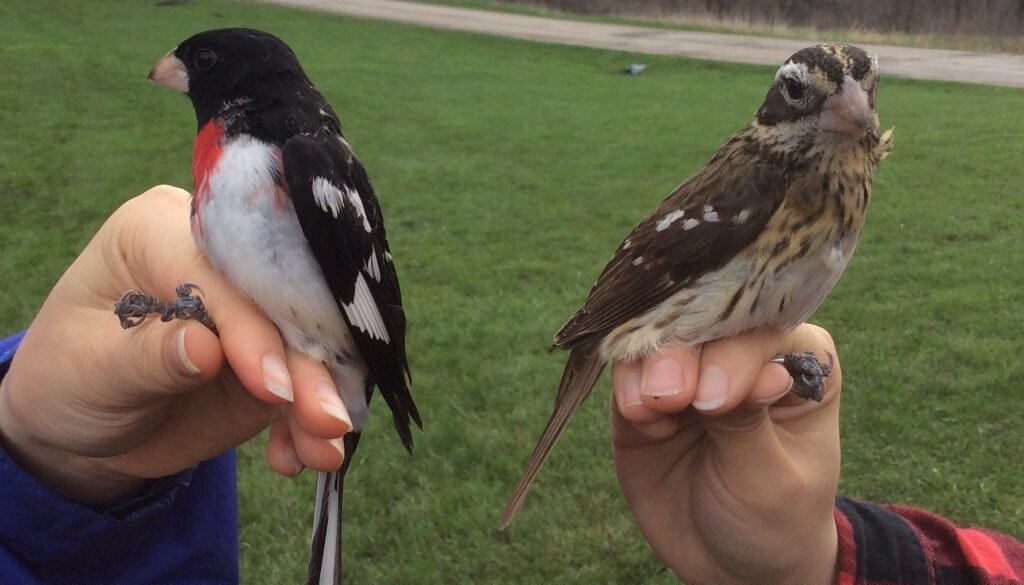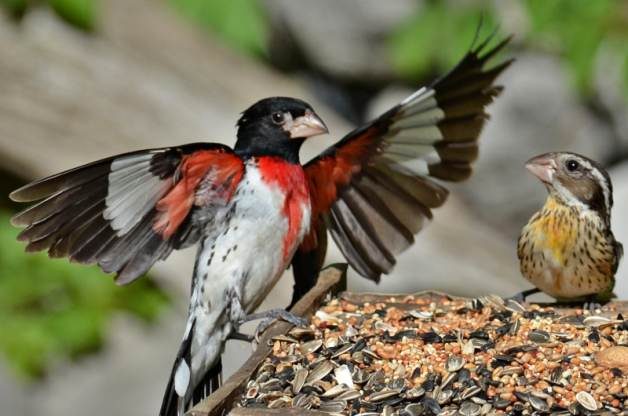There's so much about nature that we don't know about, and each new and rare discovery is exciting.
Last month, a group of scientists from the Powdermill Nature Reserve, Carnegie Museum of Natural History’s environmental research center in the United States, found a Rose-breasted Grosbeak (a type of songbird) that was half male and half female.
The bird was found sort of by accident when the researchers caught it for the purpose of tagging it for research purposes.
According to a press release by the Carneige Museum, Rose-breasted Grosbeaks are sexually dimorphic, which means that both male and female parts of the bird have different plumage colours.
On this bird, the "male" side of it had pink "wing pits" and breast spots as well as black wing feathers while the "female" side of it has yellow "wing pits" and breast spots with wing feathers that are more brown than black.
Bird banding program manager at Powdermill, Annie Lindsay, in the statement, said that the entire banding team was very excited to see such a rarity up close, and are riding the high of this once-in-a-lifetime experience.
"One of them described it as ‘seeing a unicorn’ and another described the adrenaline rush of seeing something so remarkable.
"They all are incredibly grateful to be part of such a noteworthy and interesting banding record.
"Bilateral gynandromorphism, while very uncommon, is normal and provides an excellent example of a fascinating genetic process that few people ever encounter,” she said.

This was the first such bird that the centre has recorded in the last 15 years and the tenth bilateral gynandromorphs (two-gender) in its 64-year history.
One very interesting tidbit that we found in the press release is that for female birds, only their left ovaries are functional.
Since this particular bird's female parts are on the left, it may be possible for them to breed but since it's not breeding season, the researchers don't know for sure.
Last month, a group of scientists from the Powdermill Nature Reserve, Carnegie Museum of Natural History’s environmental research center in the United States, found a Rose-breasted Grosbeak (a type of songbird) that was half male and half female.
The bird was found sort of by accident when the researchers caught it for the purpose of tagging it for research purposes.
Easy to tell the gender of the bird

According to a press release by the Carneige Museum, Rose-breasted Grosbeaks are sexually dimorphic, which means that both male and female parts of the bird have different plumage colours.
On this bird, the "male" side of it had pink "wing pits" and breast spots as well as black wing feathers while the "female" side of it has yellow "wing pits" and breast spots with wing feathers that are more brown than black.
Bird banding program manager at Powdermill, Annie Lindsay, in the statement, said that the entire banding team was very excited to see such a rarity up close, and are riding the high of this once-in-a-lifetime experience.
"One of them described it as ‘seeing a unicorn’ and another described the adrenaline rush of seeing something so remarkable.
"They all are incredibly grateful to be part of such a noteworthy and interesting banding record.
"Bilateral gynandromorphism, while very uncommon, is normal and provides an excellent example of a fascinating genetic process that few people ever encounter,” she said.

This was the first such bird that the centre has recorded in the last 15 years and the tenth bilateral gynandromorphs (two-gender) in its 64-year history.
One very interesting tidbit that we found in the press release is that for female birds, only their left ovaries are functional.
Since this particular bird's female parts are on the left, it may be possible for them to breed but since it's not breeding season, the researchers don't know for sure.







